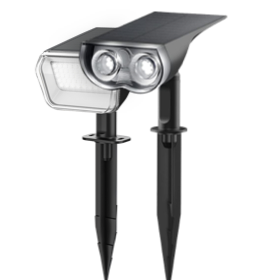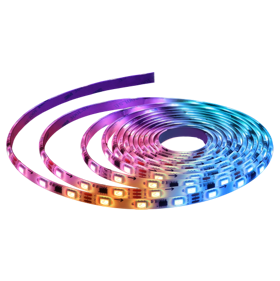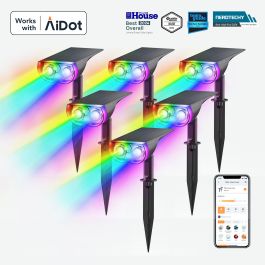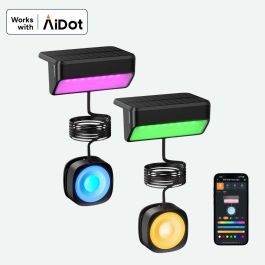Do Bug Zappers Work on Flies? Full Breakdown
“Do bug zappers work on flies?”
Yes, bug zappers do work on flies, but their effectiveness varies significantly depending on the type of fly, time of day, and environmental conditions.
While house flies show moderate attraction to UV light compared to moths or beetles, bug zappers can still be an effective part of your fly control strategy when used correctly. Most success occurs at night when flies are naturally drawn to artificial light sources. It's worth noting that alternatives like yellow insect light bulbs are designed to be less attractive to bugs, making them a good choice for general illumination in living spaces where you want to deter insects rather than draw them in for elimination. If you've ever found yourself swatting at persistent flies during a backyard barbecue or dealing with them buzzing around your kitchen, you're not alone—and understanding how to optimize bug zapper performance can make all the difference in reclaiming your space.
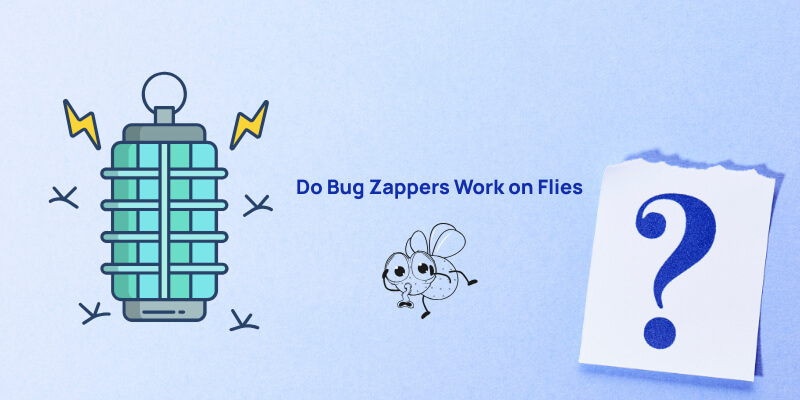
Understanding Bug Zappers: How They Work
Bug zappers work by using ultraviolet light to lure flying insects into an electrified grid that kills them instantly. The UV bulb emits light in wavelengths that attract bugs, while the high-voltage electrical grid delivers a lethal shock upon contact. Modern advancements, including LED bug light bulbs, are increasingly being integrated into these devices, offering energy efficiency while still emitting the specific wavelengths of light necessary to attract a wide range of flying pests.
The Science Behind Bug Zappers
Bug zappers operate on a simple yet effective principle: they use ultraviolet (UV) light to attract flying insects, then eliminate them with an electrified grid. The bug zapper bulb emits UV-A light in the 315-400 nanometer range, which is invisible to humans but highly attractive to many flying insects. When insects approach the light source, they encounter a high-voltage electrical grid that delivers a lethal shock upon contact.
The effectiveness of any bug zapper depends largely on the quality and intensity of its UV light output. The electrical grid typically operates at 2,000-4,000 volts, enough to instantly kill most flying insects while remaining safely enclosed within protective housing.
Types of Insects Typically Attracted
Bug zappers are most effective against nocturnal flying insects that use natural light sources for navigation. Moths, beetles, gnats, and mosquitoes show the highest attraction rates to UV light. However, different insects respond differently to artificial light sources, which is why understanding specific fly behavior is crucial for setting realistic expectations about bug zapper performance.
Do Bug Zappers Work on Flies? The Complete Answer
The short answer is yes, but with important limitations. Bug zappers can kill flies, but they're significantly less effective on house flies compared to other flying insects like moths or mosquitoes. Success depends heavily on timing, placement, and understanding fly behavior patterns.
House Flies and Bug Zapper Effectiveness
Do bug zappers work on house flies? The answer is moderately yes, but with important caveats. Here are the key findings:
Moderate effectiveness: Bug zappers show 15-25% attraction rates for house flies compared to other flying insects
Navigation differences: House flies rely more on visual landmarks and food odors than light sources for orientation
Killing capability: Bug zappers effectively eliminate any flies that contact the electrical grid
Attraction challenge: The main limitation is drawing flies to the device, not killing them
Competing attractants: House flies prefer decomposing organic matter, food sources, and moisture over UV light
Optimal conditions: Bug zappers capture more house flies when other attractants are minimized and during evening hours
Success factors: Effectiveness improves significantly with proper timing and elimination of competing food sources
Daytime vs. Nighttime Performance
"Do bug zappers work on flies during the day?"
The effectiveness drops significantly during daylight hours. Natural sunlight contains UV wavelengths that compete with artificial UV light from bug zappers, reducing their attractiveness to flies. Additionally, house flies are most active during warm, sunny conditions when they're focused on finding food and breeding sites rather than being drawn to light sources.
For optimal results, operate bug zappers from dusk until dawn when artificial UV light faces less competition from natural light. During these hours, flies preparing to rest for the night may be more susceptible to light attraction, improving capture rates by up to 60% compared to daytime operation.
Effectiveness of Bug Zappers on Different Fly Species
Bug zappers attract and kill flying insects primarily by emitting ultraviolet (UV) light. However, their effectiveness varies significantly depending on the fly species and their behavioral traits, especially their attraction to light.
|
Fly Species |
Attraction to Bug Zappers |
Approximate Capture Rate* |
Notes |
|
Fruit flies & Gnats |
High |
60-80% |
Smaller flies that rely heavily on light for navigation, making them highly susceptible to UV light traps. |
|
House flies |
Moderate to low |
15-25% |
Less strongly attracted to light; only a small fraction are caught by bug zappers. |
|
Blow flies |
Moderate, especially at dusk |
20-30% |
Attraction can increase in low light or dusk conditions; capture rates vary based on environment. |
|
Cluster flies |
Moderate, seasonally (fall) |
40-50% (optimistic) |
Better attraction when seeking overwintering sites in autumn; fewer precise studies available. |
Key Points:
- Behavioral Differences: Smaller flies such as fruit flies and gnats display strong phototaxis (movement towards light), making them more prone to capture by bug zappers. Larger flies like house flies, which rely less on light cues, show lower attraction rates.
- Seasonal Variations: Some flies (e.g., cluster flies) show increased attraction during certain seasons, affecting zapper efficacy during those times.
- Limitations: Bug zappers indiscriminately kill many insects, including beneficial ones like moths and pollinators, which affects ecological balance.
- Mosquitoes and biting flies: Bug zappers are generally ineffective against mosquitoes and most biting flies because these insects rely on other cues such as carbon dioxide and body heat for host detection, not UV light.
Factors Affecting Bug Zapper Performance on Flies
Several key factors determine how well your bug zapper will perform against flies. The most critical element is strategic placement—proper positioning can dramatically increase capture rates, while poor placement renders even the best units ineffective. Understanding these performance factors helps you optimize your setup for maximum fly control.
Placement and Positioning
- Height: Position units 6-8 feet high for optimal coverage
- Light competition: Keep away from competing light sources like porch lights or windows
- Outdoor strategy: Place at perimeter of entertainment areas, not directly above food or seating
- Capture zones: Create interception points before flies reach your main space
- Indoor considerations: Avoid kitchen areas where food odors override UV attraction
- Ventilation: Ensure adequate airflow to prevent dead insect accumulation
Bug Zapper Bulb Quality and Type
- Lifespan: Quality UV bulbs last 6-12 months with regular use
- Optimal wavelength: Look for UV-A light in 350-370 nanometer range
- Replacement signs: Replace when dimming occurs or blue-white glow fades
- Performance decline: UV output degrades even when visible light continues
- Quality importance: Consistent light output throughout bulb lifespan is crucial
Environmental Factors
- High humidity: Increases insect activity and improves attraction rates
- Rain impact: Reduces effectiveness and may damage electrical components
- Wind effects: Disperses insects before reaching unit; still air extends attractive range
- Competing attractants: Garbage cans, pet food, standing water outcompete UV light
- Priority approach: Address other attractants first, use bug zappers as supplementary control
Smart Outdoor Lighting: Strategic Lighting for Natural Fly Deterrence
Beyond traditional bug zappers, smart outdoor lighting can offer an innovative approach to pest management. Instead of killing flies, the goal here is to influence their behavior by making your living spaces less appealing to them.
Flies are generally attracted to light, especially UV light and cooler, brighter white light. Knowing this, the strategy isn't to "redirect" them in the sense of luring them to a specific "decoy zone" with lights, but rather to make your preferred areas less attractive to them.
You can achieve this by choosing and positioning warm-colored LED lights (like yellows or ambers, typically 2700K or lower) in your immediate outdoor living spaces, such as patios, decks, and dining areas. These warmer wavelengths are less perceptible and thus less attractive to many insects, including flies.
While you can't truly "redirect" flies with regular lighting, creating areas with less attractive lighting helps keep your immediate surroundings more comfortable and pest-free. This approach works particularly well when combined with traditional bug zappers placed away from your living areas, creating a more comprehensive pest management system that both minimizes attraction and eliminates flying insects where desired.
Smar Solar Lights Recommendations
1. Linkind SP6C Smart Solar Pathway Lights
- Customizable Light Patterns: Choose from 5 unique light patterns and 16 million RGBW colors. Easily adjust brightness/CCT to create your perfect outdoor ambiance.
Recommendation: This is excellent! The ability to choose from 16 million RGBW colors means you can specifically select warm colors like yellow, amber, or even red for your pathway lighting. The adjustable CCT (Correlated Color Temperature) is crucial – you'll want to set it to the lowest Kelvin values possible (warmest white) for general illumination when not using a specific color.
Benefit for fly deterrence: Directly supports using less attractive light colors.
- Advanced Solar Power, Effortless Smart Control, Synchronized Light Shows, Music-Reactive Ambiance: While these features are great for ambiance and control, they don't directly impact fly deterrence unless you specifically use them to maintain warm color settings and minimize unnecessary illumination.
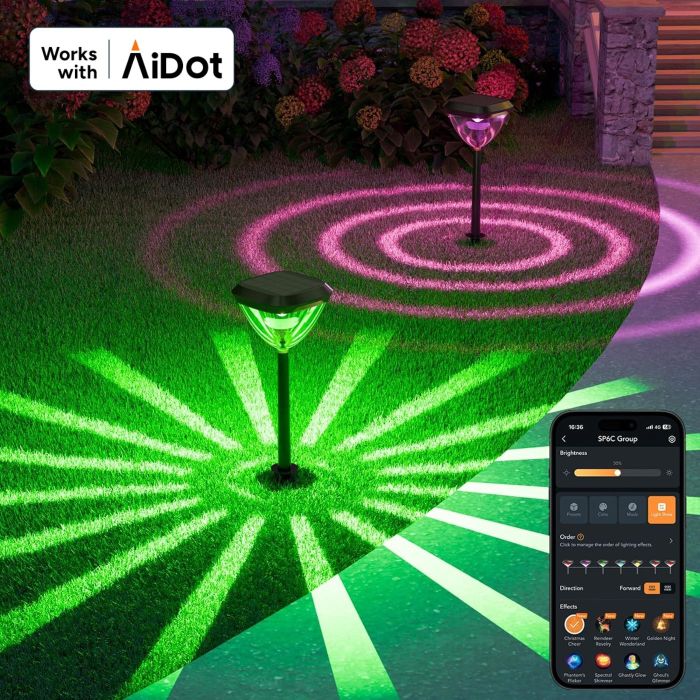
-
Customizable Light Patterns: Choose from 5 unique light patterns and 16 million RGBW colors. Easily adjust brightness/CCT to create your perfect outdoor ambiance.
-
Advanced Solar Power: Linkind SolarDot™ Technology with MPPT ensures faster charging and brighter, maximum 14-hour illumination. Say goodbye to dim, short-lived lights.
-
Effortless Smart Control: Manage lights via the AiDot app, from auto dusk-to-dawn to personalized schedules. Enjoy seamless outdoor illumination, hassle-free.
-
Synchronized Light Shows: Design dazzling displays with up to 8 groups (32 lights each). Enjoy preset themes (Halloween, Christmas) or DIY custom colors and rhythms.
-
Music-Reactive Ambiance: Elevate gatherings with lights that sync to your music. Choose from preset scenes or customize for parties, holidays, or daily enchantment.
2.Linkind SL5 Smart Solar Spotlights with Motion Sensor
- Multiple Convenient App Functions: Control smart spotlights with the AiDot App. Adjust color, temperature, brightness, and use group control, music sync, and energy-saving features.
Recommendation: Like the SP6C, the ability to adjust color and temperature is key. Set these to warm hues (yellow, amber, lowest K temperature for white).
Benefit for fly deterrence: Direct control over light spectrum to reduce attraction.
- Three Optional Lighting Modes: Motion for safety and efficiency, Luminance for automatic dusk-to-dawn lighting, and Continuous for constant illumination.
Recommendation: The Motion mode is highly beneficial for insect deterrence. Lights are only on when movement is detected, significantly reducing the time they are actively attracting insects. If using Luminance or Continuous, ensure the color is set to a warm, fly-less-attractive tone.
Benefit for fly deterrence: Reduces "on" time, minimizing overall attraction.
- Enhanced Lighting & Easy Installation: Good for general use, but not directly related to fly deterrence.

-
Group Control: The world's first solar spotlight with wireless capabilities to offer smart group control functionality.
-
Multiple Convenient App Functions: Control smart spotlights with the AiDot App. Adjust color, temperature, brightness, and use group control, music sync, and energy-saving features.
-
Music Sync & Preset Scenes: Sync RGBTW smart solar lights with music by granting microphone permission. Customize effects, preset scenes, or choose from 16 million colors to enhance your outdoor ambiance.
-
Three Optional Lighting Modes: Linkind solar lights feature 3 modes: Motion for safety and efficiency, Luminance for automatic dusk-to-dawn lighting, and Continuous for constant illumination.
-
Enhanced Lighting & Easy Installation: Linkind solar spotlights are adaptable for ground or wall mounting, with 360° horizontal and 180° vertical adjustability.
3.Linkind SL5C Smart Solar Spotlights
- Dynamic Color Effects: Transform your yard with color changing solar spotlights offering 16 million color options. Create stunning light shows that sync with music—perfect for enhancing your landscape with solar spotlights for yard decoration.
Recommendation: Again, the 16 million color options are your best friend here. Explicitly choose warm colors (yellow, amber, red) for areas where you want to minimize fly presence.
Benefit for fly deterrence: Direct control over light spectrum.
- Intelligent Scheduling: Program your solar colored spotlights with smart timers including dusk-to-dawn automation and customized schedules. Set your preferred brightness levels and timing to maximize your solar landscape spotlights' effectiveness.
Recommendation: Use customized schedules to limit "on" time, especially during peak insect activity hours if you're not actively using the space. Setting appropriate brightness levels (lower is generally better for deterrence if still sufficient for human use) is also a good idea.
Benefit for fly deterrence: Reduces "on" time and potentially light intensity.
- Enhanced Solar Efficiency, App & Voice Control, Versatile Installation: These are general smart lighting benefits, supporting ease of use for the recommended settings.
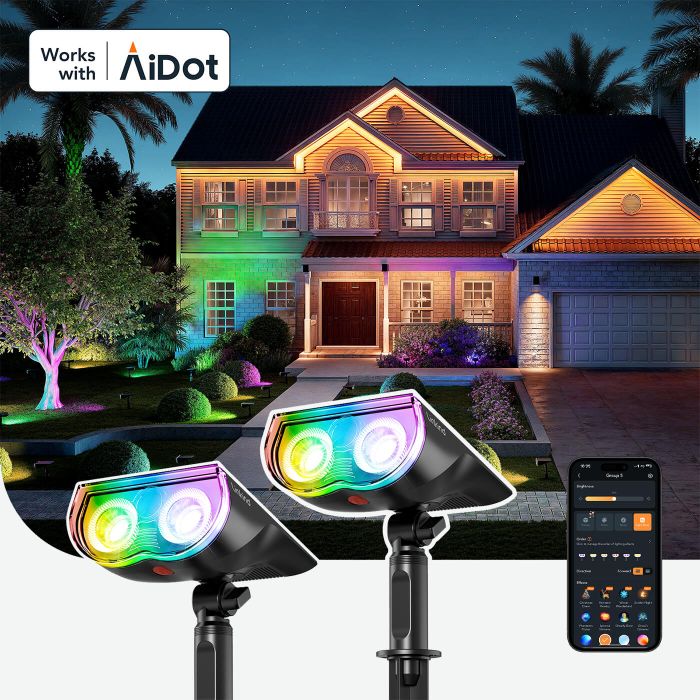
-
Enhanced Solar Efficiency: Experience 24/7 illumination with these smart solar spotlights featuring MPPT technology that improves charging by 23.5%. Premium 5C automotive-grade technology delivers up to 14 hours of continuous solar powered spotlight performance.
-
App & Voice Control: Manage your solar landscape spotlights through the AiDot app or use voice commands with Amazon Alexa and Google Home via Linkind's Bluetooth Mesh Hub for convenient control of your solar outdoor spotlight network.
-
Dynamic Color Effects:Transform your yard with color changing solar spotlights offering 16 million color options. Create stunning light shows that sync with music—perfect for enhancing your landscape with solar spotlights for yard decoration.
-
Intelligent Scheduling: Program your solar colored spotlights with smart timers including dusk-to-dawn automation and customized schedules. Set your preferred brightness levels and timing to maximize your solar landscape spotlights' effectiveness.
-
Versatile Installation: Mount these IP67 waterproof solar outdoor spotlights on walls or ground with 360° horizontal and 180° vertical adjustability. Group up to 32 lights into 8 separate zones for comprehensive yard illumination.
These Linkind smart solar lights, with their advanced color control and scheduling features, give you excellent tools to manage light in a way that is less appealing to flies, contributing to a more comfortable outdoor experience.
FAQ
Q1: Are house flies attracted to bug zappers?
A: House flies are moderately attracted to bug zappers, but less so than moths or beetles. Success rates improve in darker conditions.
Q2: Does a bug zapper kill flies effectively?
A: Bug zappers can kill flies that come into contact with the electrical grid, but attraction rates vary by species.
Q3: Will a bug zapper kill flies during the day?
A: Daytime effectiveness is significantly lower as flies are less attracted to UV light when competing with natural sunlight.
Q4: Do bug zappers use a lot of electricity?
A: Most residential bug zappers use 15-40 watts, similar to a standard light bulb. Operating costs are typically $10-25 per year.
Q5: Where should I place a bug zapper to catch flies?
A: Position 6-8 feet high, away from competing light sources, near fly breeding.












